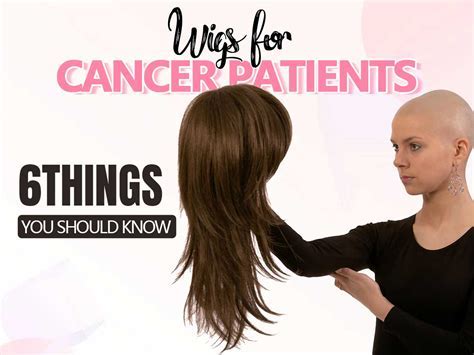Cancer is a life-altering diagnosis, and it can have a significant impact on physical appearance, including hair loss. Wigs offer cancer sufferers a solution to maintain their sense of self and style during and after treatment.

1. Human Hair Wigs:
– Made from real human hair, offering a natural and realistic look.
– More expensive and require regular maintenance and styling.
2. Synthetic Hair Wigs:
– Made from synthetic fibers, offering a variety of styles and colors.
– Less expensive and more durable, but may not look as natural as human hair wigs.
3. Custom-Fitted Wigs:
– Created specifically for the individual’s head shape and size.
– Offer the most natural and comfortable fit.
– More expensive and require a longer lead time.
- Restore Confidence: Wigs can help cancer sufferers feel more confident and regain their sense of self.
- Improve Appearance: Wigs can cover hair loss and enhance the overall appearance, boosting mood and well-being.
- Minimize Emotional Distress: Hair loss can be a psychological setback for cancer patients. Wigs can mitigate this distress and provide emotional support.
- Protect Scalp: Wigs can protect the sensitive scalp from sun exposure, irritation, and infection.
1. Consider Your Head Shape and Size: Determine your head shape (oval, round, square, etc.) and measure your head circumference.
2. Choose a Style: Select a wig style that complements your natural hair and personal preferences.
3. Match Your Skin Tone: The wig’s color should match your natural skin tone to create a seamless look.
4. Get Professional Advice: Consult with a wig specialist or stylist for guidance on the best wig for you.
1. American Cancer Society: The ACS provides a wide range of support services for cancer patients, including wig banks and financial assistance.
2. Look Good Feel Better Foundation: This organization offers free wig consultations and fittings to women undergoing cancer treatment.
3. Local Wig Shops: Many local wig shops specialize in providing wigs for cancer sufferers and offer personalized services.
- Wash and Condition: Synthetic wigs can be washed and conditioned using gentle products. Human hair wigs require more specialized care.
- Use a Wig Stand: Store your wig on a wig stand to maintain its shape and prevent tangles.
- Avoid Heat: Do not use heat styling tools on synthetic wigs, as it can damage the fibers.
- Touch Up Roots: For human hair wigs, touch up roots regularly to blend with your natural hair color.
Pros:
- Restores confidence and appearance
- Minimizes emotional distress
- Protects scalp
- Wide variety of styles and colors available
Cons:
- Can be expensive
- Requires maintenance and care
- May not feel fully natural
- Can be uncomfortable in hot weather
Wigs provide cancer sufferers with a powerful tool to regain their sense of identity and well-being. By choosing the right wig and caring for it properly, individuals can maintain their confidence and style throughout their cancer journey.
